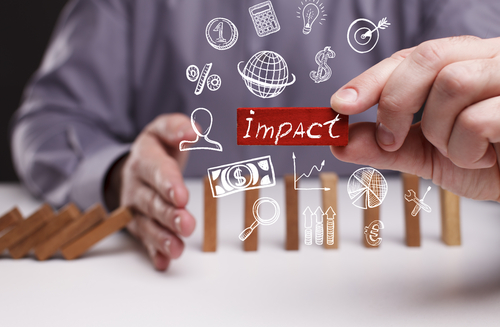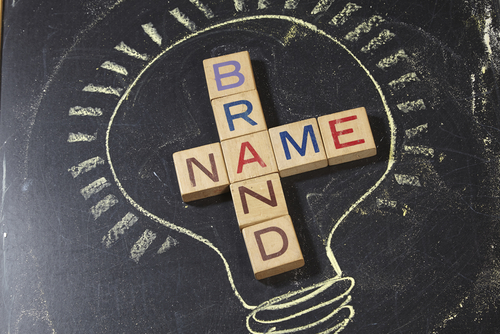
Although many brands aspire to resolve problems with the status quo, only a minority achieve their goal with any measure of success. Challenges often stem from companies’ inabilities to understand customer expectations, readapt, and appropriately brand themselves to the marketplace. Think Borders and Toys R Us—both plummeted due to online shipping—and Kodak who failed to transition to digital cameras in time.
As technologies and tools continue to advance, digital channels fragment and branding strategies must evolve. Today, just the social channel segments into multiple platforms (e.g., Facebook, Instagram, Snapchat, Pinterest, and YouTube). Artificial intelligence (AI) is automating processes and enabling new forms of consumer engagement. Measurement and ROI tools are better than ever (for those that can harness them and the relevant data). Furthermore, consumer expectations also keep rising.
How Are Brands Keeping Current?
These are only a few changes that brands must stay current on today because tomorrow will be different—and even more complicated. Our brand consultants have noted three rapidly changing areas that challenge brand marketers’ ability to keep current: 1) ever-rising consumer expectations, 2) evolving channels of customer engagement, and 3) the predominance of data as a driver of strategy.
Consumer Expectations
salesforce.com’s 2018 State of the Connected Consumer reported four out of five consumers say that their experience with a brand is just as valuable as the products or services it offers, and approximately 60% have switched to a competitor because it provided a better experience. Today’s consumers expect an unprecedented degree of relevance, and increasingly personalized customization, in the products and services they purchase. Salesforce also found that 60% of customers look for “tailored engagement based on past experience” and almost 70% “expect an Amazon-like buying experience.”
Discerning companies are responding. Walt Disney’s Orlando resort provides visitors with MagicBands to reserve rides, unlock hotel rooms, and make purchases and guests at Disney’s Shanghai resort can do the same things with their smartphones. Disney gathers customer data from every interaction and uses it to serve up targeted offerings to guests. Likewise, Carnival introduced “smart medallions” that use similar technology on its cruise ships.
However, meeting rising expectations requires new internal capabilities. Tracking a customer through the purchase journey as they crisscross channels requires that companies reinvent their operating models to act quickly. They need a data strategy they can execute at scale and tracking abilities across channels that can adapt in real time to enable tailored experiences. They must also provide 24-7 access and service because customers want to decide when and where they interact with a brand.
Engagement Channels
There’s little doubt that voice is the next major consumer interface at home, at work, and in the car, with voice recognition devices and a proliferation of digital channels (e.g., Siri, Alexa, Google Assistant). However, it’s not just voice; vision-driven engagement is another powerful channel for marketers with augmented reality (AR) and virtual reality (VR).
BCG estimates that roughly one-third of all smartphone users in the US (more than 80 million people) engage with AR at least monthly (e.g., Snapchat, Pokémon Go). Furthermore, these consumers are a particularly attractive segment for advertisers: most are millennials (age 19 to 34) or Generation Z consumers (age 18 or younger).
Another form of vision-driven engagement, VR, enables consumers to experience products before purchasing them, without ever leaving their living room couch. VR and AI are a particularly potent combination. Think about simulated interactions with products, virtual tours of homes thousands of miles away, or remotely test-driving a car. Ikea utilizes VR that enables consumers to “walk” around a 3D kitchen and interact with objects in real time. Similarly, Caterpillar generated an app that takes users into a bulldozer to experience its features and capabilities from behind the wheel.
Predominance of Data
The Internet of Things (IoT) is generating a data explosion (e.g., mobile connections are predicted to rise from 7.5 billion in 2017 to 25.1 billion in 2025). Thanks to the vast amounts of new data generated every day, the information at marketers’ fingertips is facilitating improved targeting and customer insights and enabling more complex personalization functionality.
The proliferation of available channels and the importance of managing the customer journey has put an increasing value on measurement. Data availability, connections, and processing power are vital to the ability to test and to link marketing spending and ROI (i.e., how individual marketing channels and tactics drive impact within the stages of the customer journey).
It is imperative for organizations to integrate the reality of the digital age into their branding strategy. Those who don’t, or do so at a slower rate, will soon emerge as obsolete and irrelevant. Integration is no longer an option, as the status quo continues to disrupt in most industries.
Recent Posts
Posts by Topics
- Brand Strategy (57)
- Brand Strategy Consulting (28)
- Brand Differentiation (27)
- Customer Experience (24)
- Brand Positioning (22)
- Marketing Strategy (9)
- Brand Extension Strategy (8)
- Customer Behavior (8)
- Brand Architecture Strategy (7)
- Brand Extension (7)
- Brand Growth (7)
- Brand Portfolio & Architecture (7)
- Brand Purpose (7)
- Brand Value Proposition (7)
- Brand Engagement (6)
- Brand Portfolio Strategy (6)
- Brand Storytelling (6)
- Rebranding Strategy (6)
- Brand Awareness (5)
- Brand Image (5)
- Branding (5)
- Rebranding (5)
- Technology (5)
- B2B Brand Strategy (4)
- Brand Experience (4)
- Value Proposition (4)
- Brand Extendibility (3)
- Brand Metrics (3)
- Brand Repositioning (3)
- Corporate Branding (3)
- Differentiation Strategy (3)
- Measurement & Metrics (3)
- Brand Engagement Strategy (2)
- Brand Portfolio (2)
- Brand Promise (2)
- Brand Voice (2)
- Digital Marketing (2)
- Digital and Brand Experience (2)
- Employee Brand Engagement (2)
- Brand Architecture (1)
- Brand Development (1)
- Brand Equity (1)
- Brand Identity (1)
- Brand Measurement (1)
- Brand Name (1)
- Brand Strategy Consultants (1)
- Brand Strategy Firms (1)
- Digital Strategy (1)
- Internal Branding (1)
- Messaging (1)


